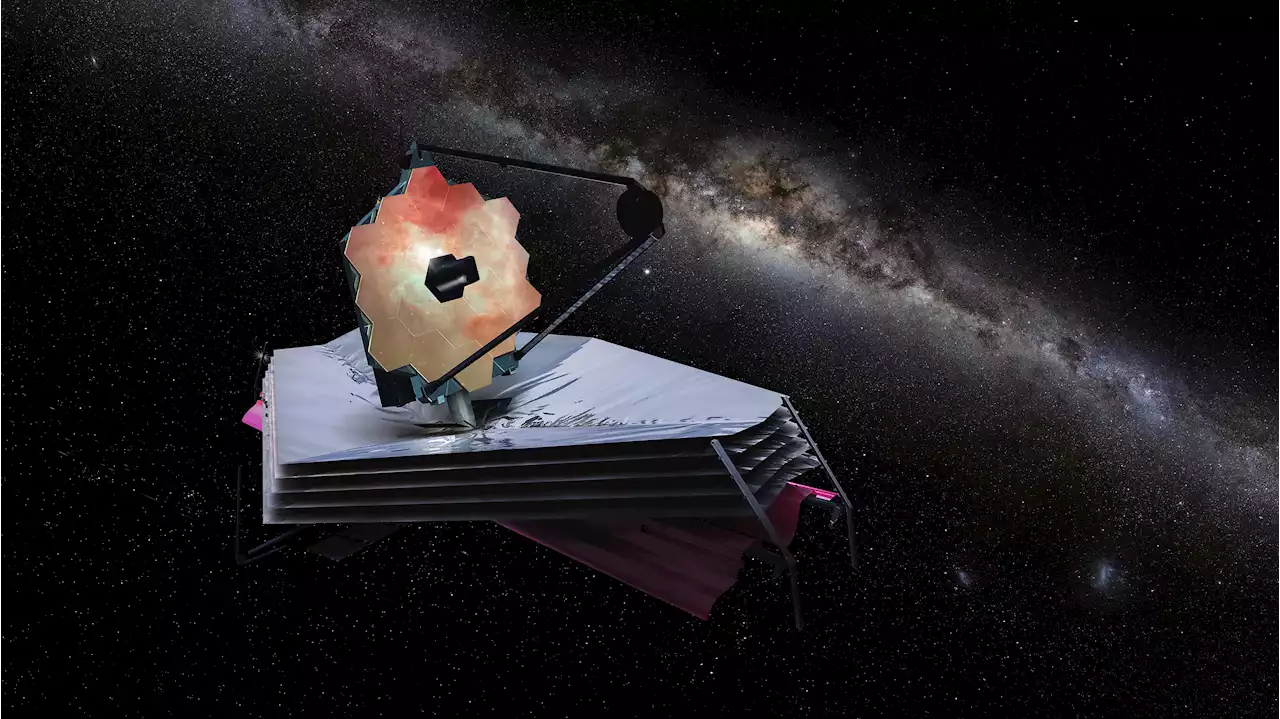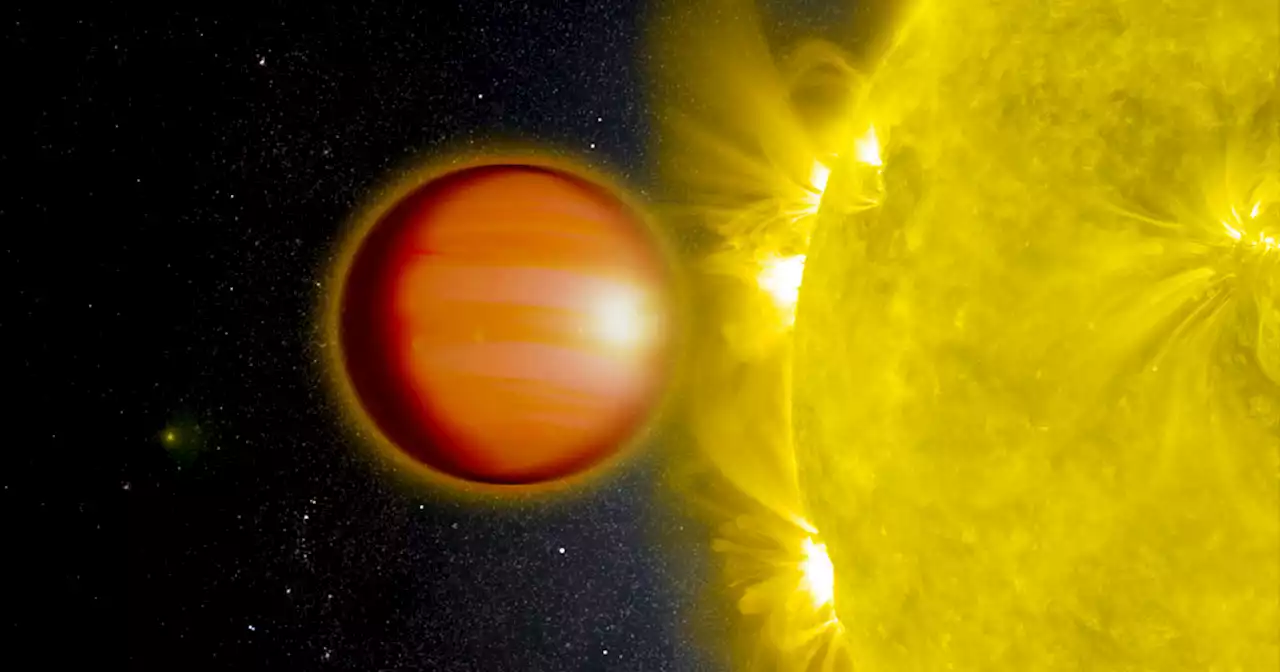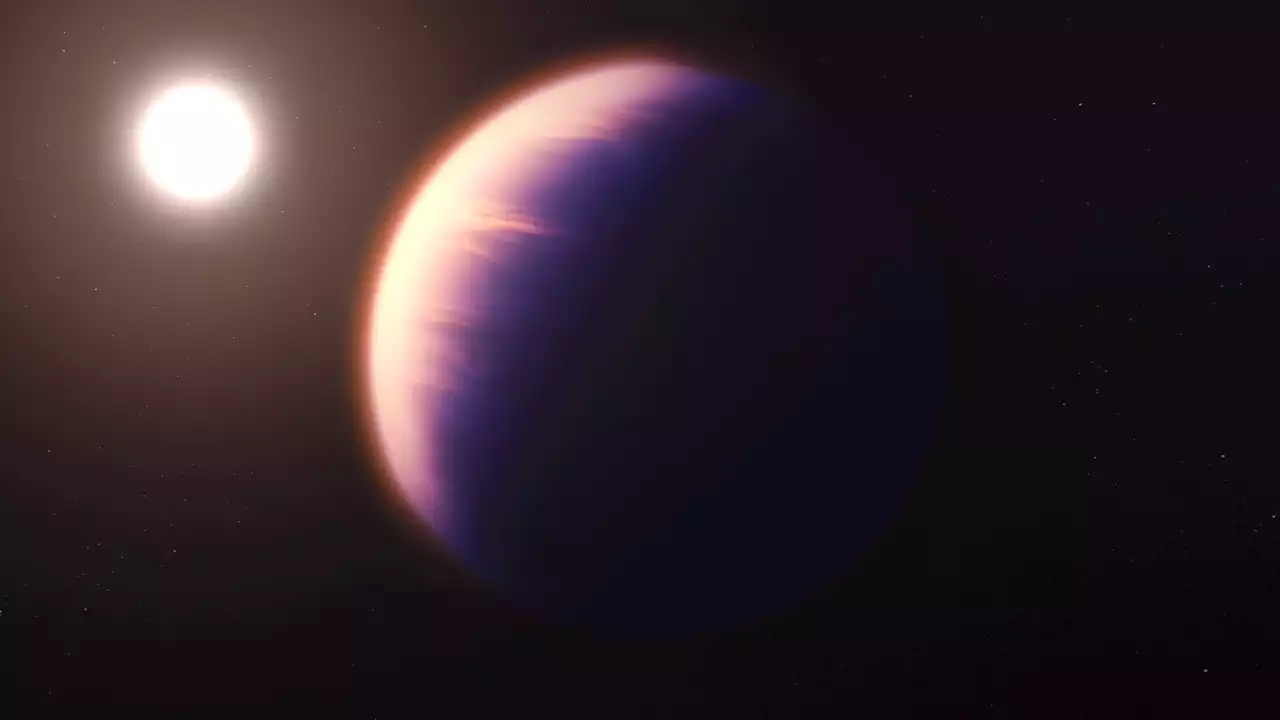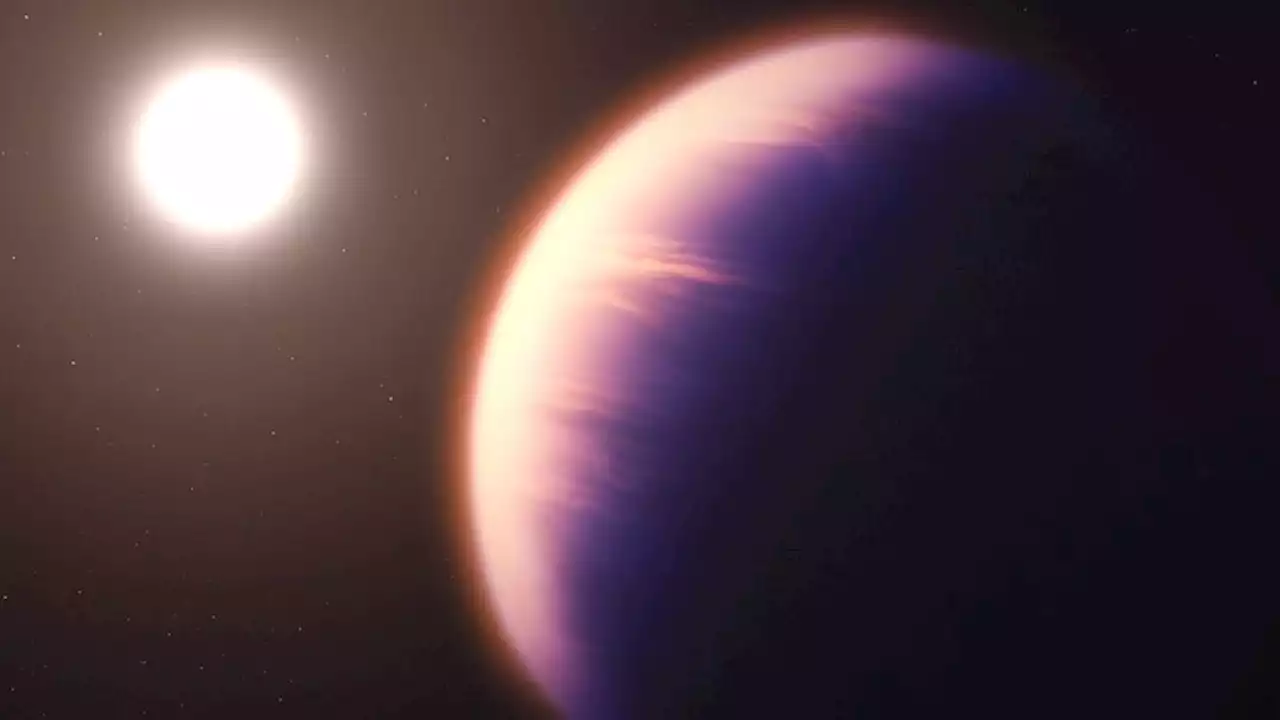Scientists used transmission of light to determine the makeup of the gas giant's atmosphere.
. The planet’s puffiness is partially due to the fact that it’s about 1,600 degrees Fahrenheit , giving it the nickname “hot Saturn.” WASP-39b is in an endless summer because it orbits its home star very closely, unlike the cooler and more compact gas giants in our solar system. It’s so close that it completes a complete orbit of its star, or one “year,” in just over four Earth-days.WASP-39b was first reported using ground-based detections of periodic dimming of light from its host star.
Different gases absorb different combinations of colors, which means researchers “can analyze small differences in brightness of the transmitted light across a spectrum of wavelengths to determine exactly what an atmosphere is made of” according to NASA.
Credits: Illustration: NASA, ESA, CSA, and L. Hustak ; Science: The JWST Transiting Exoplanet Community Early Release Science Teamfor these observations. “As soon as the data appeared on my screen, the whopping carbon dioxide feature grabbed me,” Zafar Rustamkulov, a graduate student at Johns Hopkins University and member of the JWST Transiting Exoplanet Community Early Release Science team, which undertook this investigation, said in a statement.
“Detecting such a clear signal of carbon dioxide on WASP-39 b bodes well for the detection of atmospheres on smaller, terrestrial-sized planets,” team leader Natalie Batalha of the University of California at Santa Cruz said in the NASA statement. For scientists, understanding what makes up a planet’s atmosphere is important because it offers a window into its origin and evolution. “Carbon dioxide molecules are sensitive tracers of the story of planet formation,” research team member Mike Line of Arizona State University said in the NASA statement. “By measuring this carbon dioxide feature, we can determine how much solid versus how much gaseous material was used to form this gas giant planet.
United States Latest News, United States Headlines
Similar News:You can also read news stories similar to this one that we have collected from other news sources.
 Astronomers Detect First Clear Signal of Carbon Dioxide in an Exoplanet's AtmosphereAn early – and exciting – science result from the James Webb Space Telescope (JWST) was announced today: the first unambiguous detection of carbon dioxide in the atmosphere of an exoplanet.
Astronomers Detect First Clear Signal of Carbon Dioxide in an Exoplanet's AtmosphereAn early – and exciting – science result from the James Webb Space Telescope (JWST) was announced today: the first unambiguous detection of carbon dioxide in the atmosphere of an exoplanet.
Read more »
 James Webb detected carbon dioxide on a planet for the first timeNASA's James Webb space telescope has detected carbon dioxide in the atmosphere of an exoplanet for the first time.
James Webb detected carbon dioxide on a planet for the first timeNASA's James Webb space telescope has detected carbon dioxide in the atmosphere of an exoplanet for the first time.
Read more »
 James Webb Spots 'Clear Evidence' of CO2 in the Atmosphere of an ExoplanetNASA's James Webb Space Telescope has made the first 'clear detection' of carbon dioxide in the atmosphere of an exoplanet, according to NASA.
James Webb Spots 'Clear Evidence' of CO2 in the Atmosphere of an ExoplanetNASA's James Webb Space Telescope has made the first 'clear detection' of carbon dioxide in the atmosphere of an exoplanet, according to NASA.
Read more »
 Carbon dioxide detected on exoplanet for 1st time by James Webb Space TelescopeJust as it shared some of the first and clearest images of the cosmos, the James Webb Space Telescope has delivered another first — evidence of carbon dioxide on an exoplanet.
Carbon dioxide detected on exoplanet for 1st time by James Webb Space TelescopeJust as it shared some of the first and clearest images of the cosmos, the James Webb Space Telescope has delivered another first — evidence of carbon dioxide on an exoplanet.
Read more »
 Webb Space Telescope Detects Carbon Dioxide in the Atmosphere of an ExoplanetNASA’s Webb ushers in a new era of exoplanet science with the first unequivocal detection of carbon dioxide in a planetary atmosphere outside our solar system. After years of preparation and anticipation, exoplanet scientists are overjoyed. NASA’s James Webb Space Telescope has captured an astonish
Webb Space Telescope Detects Carbon Dioxide in the Atmosphere of an ExoplanetNASA’s Webb ushers in a new era of exoplanet science with the first unequivocal detection of carbon dioxide in a planetary atmosphere outside our solar system. After years of preparation and anticipation, exoplanet scientists are overjoyed. NASA’s James Webb Space Telescope has captured an astonish
Read more »
 James Webb Space Telescope sniffs out carbon dioxide around an alien worldNo telescope has ever detected carbon dioxide in an exoplanet atmosphere before.
James Webb Space Telescope sniffs out carbon dioxide around an alien worldNo telescope has ever detected carbon dioxide in an exoplanet atmosphere before.
Read more »
